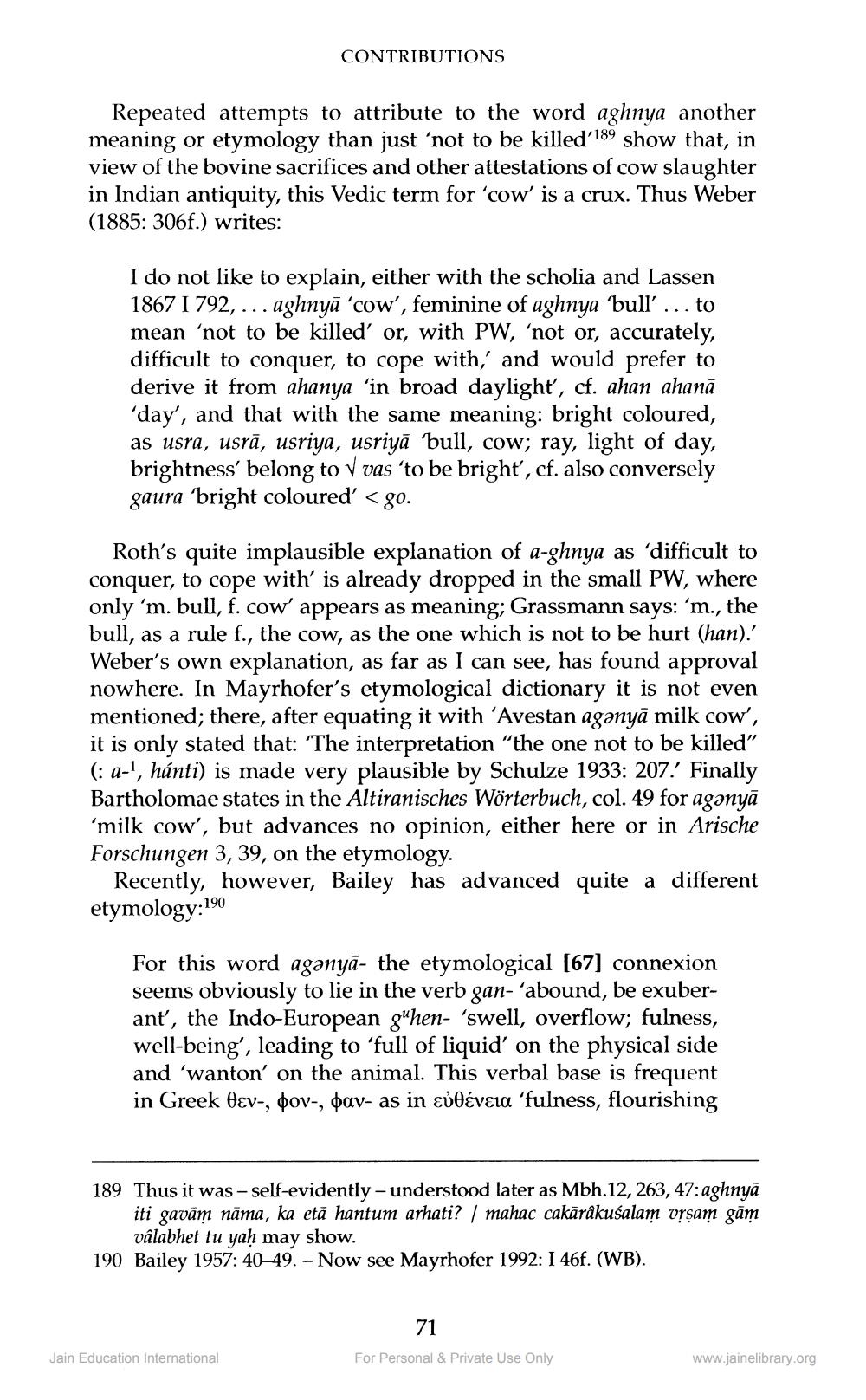________________
CONTRIBUTIONS
Repeated attempts to attribute to the word aghnya another meaning or etymology than just 'not to be killed'189 show that, in view of the bovine sacrifices and other attestations of cow slaughter in Indian antiquity, this Vedic term for 'cow' is a crux. Thus Weber (1885: 306f.) writes:
I do not like to explain, either with the scholia and Lassen 1867 I 792, .aghnya 'cow', feminine of aghnya 'bull'... to mean 'not to be killed' or, with PW, 'not or, accurately, difficult to conquer, to cope with,' and would prefer to derive it from ahanya 'in broad daylight', cf. ahan ahanā 'day', and that with the same meaning: bright coloured, as usra, usrā, usriya, usriyā 'bull, cow; ray, light of day, brightness' belong to √ vas 'to be bright', cf. also conversely gaura 'bright coloured' < go.
Roth's quite implausible explanation of a-ghnya as 'difficult to conquer, to cope with' is already dropped in the small PW, where only 'm. bull, f. cow' appears as meaning; Grassmann says: 'm., the bull, as a rule f., the cow, as the one which is not to be hurt (han).' Weber's own explanation, as far as I can see, has found approval nowhere. In Mayrhofer's etymological dictionary it is not even mentioned; there, after equating it with 'Avestan agǝnyā milk cow', it is only stated that: 'The interpretation "the one not to be killed" (: a-1, hánti) is made very plausible by Schulze 1933: 207. Finally Bartholomae states in the Altiranisches Wörterbuch, col. 49 for agǝnyā 'milk cow', but advances no opinion, either here or in Arische Forschungen 3, 39, on the etymology.
Recently, however, Bailey has advanced quite a different etymology:190
For this word aganya- the etymological [67] connexion seems obviously to lie in the verb gan- 'abound, be exuberant', the Indo-European ghen- 'swell, overflow; fulness, well-being', leading to 'full of liquid' on the physical side and 'wanton' on the animal. This verbal base is frequent in Greek θεν-, φον-, φαν- as in εὐθένεια ‘fulness, flourishing
189 Thus it was - self-evidently-understood later as Mbh. 12, 263, 47: aghnyā iti gavām nāma, ka eta hantum arhati? | mahac cakārâkuśalam vṛṣam gām vâlabhet tu yaḥ may show.
190 Bailey 1957: 40-49. - Now see Mayrhofer 1992: I 46f. (WB).
Jain Education International
71
For Personal & Private Use Only
www.jainelibrary.org




